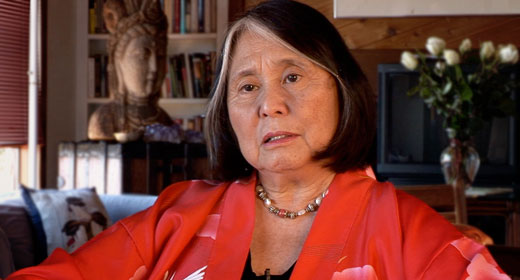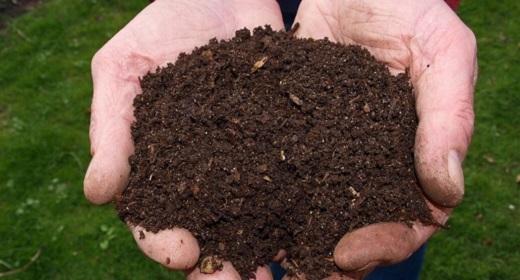Author Jean Shinoda Bolen, M.D. talks about turning a negative stereotype into an inspiring archetype for older women.

Why did the image of the crone strike you as representative of women getting older?
It comes out of the archetype of the Great Goddess as maiden, mother, crone, which exists forever in the collective unconscious of humanity and in the historical connection that humans have had with the moon. The moon has three phases-the waxing moon, which is associated with the young woman, or maiden phase; the full moon, the mother or mature phase; and the waning moon, which is the older woman or crone.
I came to appreciate the word “crone” from women who preceded me in the women’s spirituality movement. A number of them, as they turn menopausal, have been having croning ceremonies to honor this phase of their lives. In fact there is an ancient tradition of honoring women in the postmenopausal phase that has been non-existent in our own culture, which is so maiden-oriented.
The word “crone” does not conjure up a very attractive picture-it’s defined as a “withered, dried-up old woman.”
Crone has been made into an ugly word. Another honored word at one time-it’s so unredeemable now that I didn’t even think about trying to save it-is the word hag, which comes from hagia, which means the sacred one. It used to be associated with hagiography, the study of saints. But it’s beyond redemption [laughs].
That’s why I love to juxtapose the word “juicy” with crone. Initially, you don’t think that they fit together, but when it clicks in that they do fit together-and the juicy crone might be a way to think about yourself-it’s sort of a delight. And I maintain that the crone phase can truly be the crowning glory of a lifetime!
So what’s good about being a crone?
It’s a phase in which you can be more authentic, more capable of making a difference in your family and in the greater world. Life gives you experience, and when you draw from it, that’s true wisdom. By the time a woman is in her crone years, she is in an amazing position to be an influence. To change things for the better, to bring what she knows into a situation, to be able to say, “Enough is enough.” You don’t have to just go along with things, which is often a part of the middle years. You’re often something of a loose cannon.
There’s a humor in older women-we can laugh together about how absurd life sometimes is. In the middle of really bad transitions we can find some sister to laugh with. You can’t whine and laugh at the same time.
Can anyone of any faith be a crone, or must you follow the goddess?
It has nothing to do with following the goddess. It’s universal. A crone is a wise woman, and the archetype of the crone comes from the goddess tradition and lives in the psyche of us all, because we share a collective unconscious.
And somewhere in our depths there is an archetype or an image of a wise woman that has power, that hasn’t been invited into the culture for maybe two millennia. But as an image, this wise woman crone is being embodied by more and more contemporary older women.
When an archetype hasn’t been allowed into the culture, there’s a longing for its expression. Women want, for example, role models of the crone. We want to know what’s possible in this last third of our lives. Something is stirring in us that wants to be alive, that wants to be a source of inspiration and information.
Do any role models come to mind?
In the public world, Katharine Hepburn in her outspokenness and in her individuality-she carried that crone energy. Georgia O’Keefe did too. She was an amazing crone.
Creativity can come to the fore in this period of our lives. You have an opportunity to master whatever medium you might work in because you know it well enough to do it in your own way. But for the first time in their lives there’s the possibility of picking up creative instincts they’ve had in their maiden years which have been interrupted-they’ve not done the writing or the painting or the dancing even for some 30-40 years, and now it’s time.
Specifically, which goddesses most represent the crone?
[There are several.] Hecate, the goddess of the crossroad, who’s been demonized in our culture, became the archetype of the witch. But really she was the archetype of the wise woman, the midwife, the medium, who could be in touch with this world and the otherworld-that which is invisible in the bright light of day.
In “Goddesses in Older Women,” I look at archetypes that are personified by goddesses that didn’t exist in Greek mythology, which is Western civilization’s mythology. There’s no powerful goddess having to do with the fierceness of women, yet those archetypes certainly do exist [in other cultures]. It’s fascinating watching women at 50 and 60 decide that they’re not going to put up with something anymore. I call this the “enough is enough” archetype. The Lion-headed Goddess Sekhmet from ancient Egypt is an exemplar of an energy that some crones get in touch with.
Archetypes are an important aspect of Jungian psychology. Can you explain how they help us?
The archetype is an underlying pattern. But an actual woman who embodies the archetype is an original. She has taken the archetype of one of the goddesses I wrote about and chooses some aspects that are truly herself, that she connects with at a deep level of the psyche. The archetypal level of the psyche is a bit like the aquifers that lie underground-you tap into them and bring up energy or water from down below. And like water, it helps you to grow-and be juicy.
It’s always been my perspective on my work that I give words and images to what’s already there. And the reader will have an “Aha!” only because it then clicks in them that what I just described is stirring in them. My words served as a mirror to what’s going on inside.
How do you see women today dealing with aging?
The baby boomers are becoming 50 in huge numbers. It’s a shock to be 50, but it’s also wonderful to be 50 and appear so young, which is usually the case in this country. So I see women celebrating their 50th birthdays rather than keeping it a secret. That’s a big change. But women do not [usually] celebrate their body’s change of season. That physiological shift is a much deeper and more significant entry into the crone phase than merely becoming 50.
I look at all of us at 50 and 60-I’m 67-and consider you might have twenty, thirty or even forty good years left. What are you going to do, as Mary Oliver says in her poem, “with your one wild and precious life?”
Is the general public starting to understand more about crones?
I’ve found that what interests me is what I end up writing about, and it seems to be ahead-but not too far ahead-of what catches on. That’s really been why my books have had the life and success that they’ve had. I think one of the reasons the best-seller “The DaVinci Code” has caught on is because of its goddess underpinnings. One issue in the book is whether the Grail could possibly be the Goddess. And that was the underlying premise of “Crossing to Avalon.” When I wrote about “Goddesses in Every Woman,” the wave [of interest in goddess archetypes] was right behind it. And now I hope the same is true for crones. It truly is a significant phase.








































